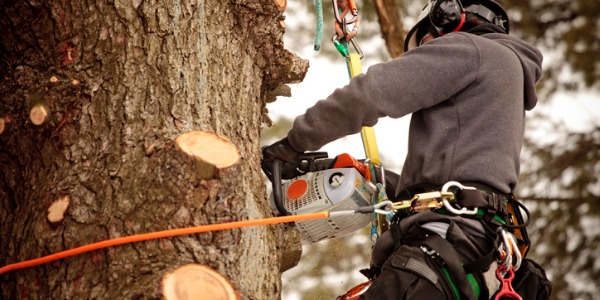What is an Arborist?
An arborist specializes in the care and maintenance of trees. Arborists are knowledgeable in tree biology and are trained in the proper techniques for planting, pruning, and removing trees. They also have expertise in diagnosing and treating tree diseases and pests. Arborists work in a variety of settings, including residential, commercial, and public spaces, such as parks and urban forests.
Arborists also play an important role in the protection of the environment, as trees are a vital component of ecosystems and help to mitigate the impacts of climate change. They may work with government agencies and conservation organizations to promote the preservation and restoration of natural forests and other ecosystems.
What does an Arborist do?

Duties and Responsibilities
The work of an arborist involves a mix of physical tasks, safety practices, and knowledge of tree biology. Their duties and responsibilities typically include:
- Tree Pruning and Trimming: Remove dead, damaged, or overgrown branches to improve a tree’s structure, health, and appearance, while also preventing potential hazards.
- Tree Planting: Select and plant appropriate tree species in the right locations, considering soil conditions, climate, and space to ensure long-term growth and stability.
- Tree Removal: Safely cut down trees that are dead, diseased, or dangerous, often using specialized equipment and techniques to avoid damage to surrounding areas.
- Health Assessment: Examine trees for signs of disease, pest infestation, or structural weakness, and develop treatment plans to restore or maintain tree health.
- Cabling and Bracing: Install support systems in trees with weak limbs or trunks to reduce the risk of breakage and help extend the life of the tree.
- Emergency Tree Care: Respond quickly to storm damage or fallen trees, clearing debris and securing dangerous areas to protect people and property.
- Equipment Use and Maintenance: Operate and maintain tools such as chainsaws, climbing harnesses, and wood chippers, ensuring safety and efficiency during tree work.
- Consultation and Advice: Offer expert guidance to homeowners, businesses, or city officials on tree selection, care practices, risk assessment, and preservation planning.
Types of Arborists
There are several types of arborists, each specializing in different aspects of tree care depending on their training, certifications, and work environment. These roles often overlap, but each focuses on a specific area of expertise.
- Climbing Arborist: Specializes in physically climbing trees using ropes and harnesses to prune, trim, or remove branches in hard-to-reach areas.
- Ground Arborist: Works from the ground to support tree care operations by handling tools, managing debris, and assisting climbers with equipment and safety.
- Utility Arborist: Maintains trees near power lines or other utility structures, ensuring branches don’t interfere with electrical systems and following strict safety protocols.
- Municipal Arborist: Employed by local governments to manage trees in public spaces such as parks, streets, and city properties, often handling tree inspections, removals, and urban forestry planning.
- Consulting Arborist: Provides expert advice, tree risk assessments, and written reports for property owners, legal cases, or construction projects, often without performing physical tree work.
- Commercial Arborist: Works for private companies offering tree services to homeowners, businesses, or institutions, handling everything from pruning and removal to health assessments.
What is the workplace of an Arborist like?
The workplace of an arborist is mostly outdoors and can vary depending on the type of job they are doing. Arborists often work in parks, neighborhoods, forests, or along streets, caring for trees in all kinds of weather. They climb trees, use ladders, or work from bucket trucks to reach high branches. Because they deal with heights and heavy equipment, safety is always a big part of their work environment.
A typical day might include trimming branches, removing dead trees, or planting new ones. Arborists use tools like chainsaws, ropes, harnesses, and wood chippers, so the job can be physically demanding. They need to stay alert and work carefully to avoid injuries, especially when working near power lines, roads, or buildings. Communication with a team is also important to keep the job running smoothly and safely.
Sometimes, arborists work indoors as well, especially those in consulting roles. They might write reports, create care plans, or meet with clients to discuss tree-related issues. But for most arborists, the job is hands-on and active, with plenty of time spent outdoors helping trees grow strong and healthy.
Arborists are also known as:
Arboriculturist
Tree Specialist